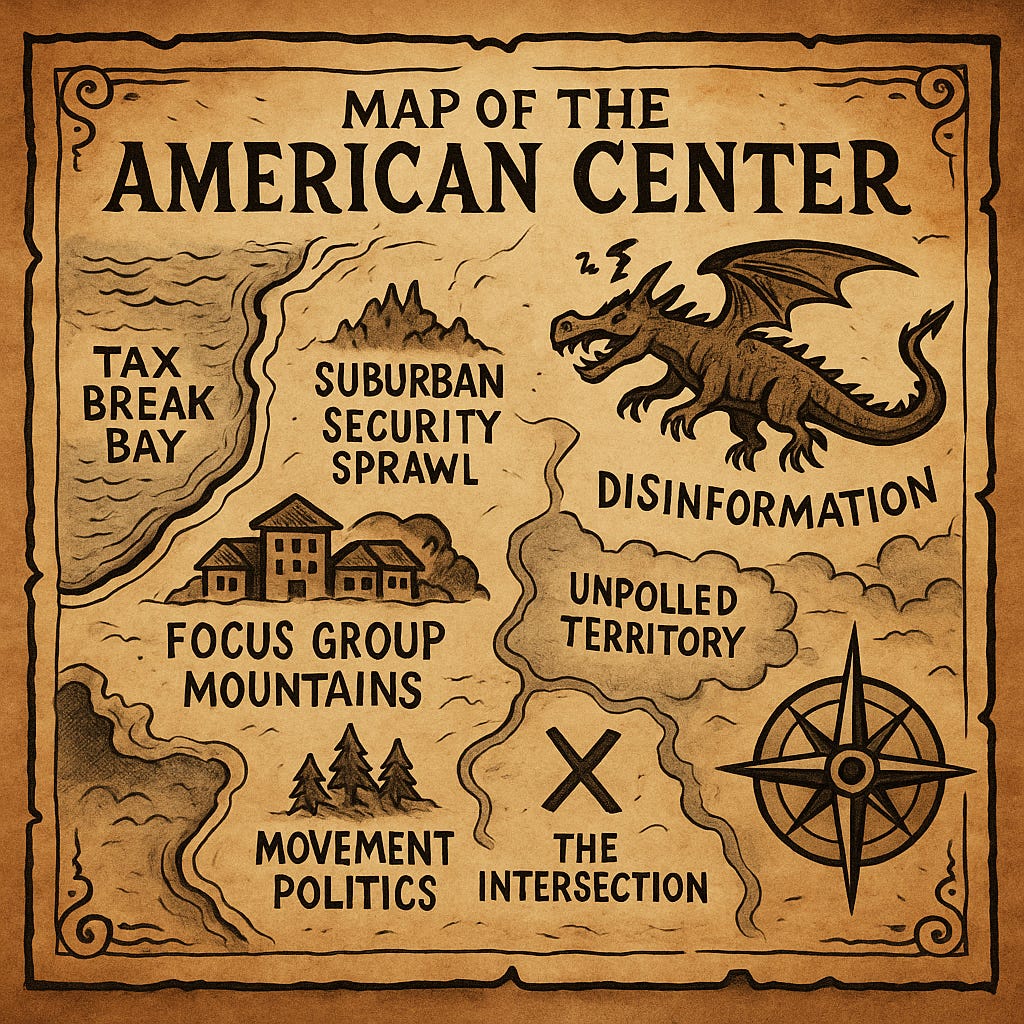How to Lose the Future, Gently
The New York Times wants a better center. What it really wants is yesterday in new packaging.

The New York Times Editorial Board recently published an opinion claiming that America still has a political center. I don’t doubt that. However, the editorial didn’t advocate for a new center emerging from changing coalitions and shifting public needs. It argued instead for restoring an old political center, one shaped by an Acela-corridor worldview and a pathologically dangerous need to separate economic and social concerns, as if voters choose between job security and voting rights like they’re picking between a side salad or fries.
The board suggested that the nation is swaying toward economic populism while becoming more socially conservative. That reading is tidy and ahistorical. It overlooks the long-standing marriage between social control and economic exclusion in this country. Marginalization has never been just ideological. It has always exacted a financial toll. The poll taxes, redlines, busted unions, and privatized everything didn’t just appear out of nowhere. They were deliberate, bipartisan compromises made at the altar of “moderation.”
Moderation, in the Times’ formulation, is ideologically neutral. But neutrality is a luxury belief in American politics. The system rewards centrism not because it reflects some deep consensus but because it’s been rigged to do so. The candidates and policies described as “moderate” often benefit from donor-driven insulation and elite amplification, not broad-based support. And the Times’ use of polling to prove moderation’s appeal avoids the reality that polls often reflect media echo chambers more than they do voter clarity.
Take immigration. The Times notes that successful Democrats in Trump districts sounded more hawkish than the party’s platform. But that’s not necessarily a strategy. It adapts to an ecosystem where cable news has turned border coverage into a recurring horror special. The cameras roll, the anchors panic, and the message saturates every platform until it becomes an ambient hum. A hum that drowns out nuance.
That’s not persuasion. It’s conditioning.
The fact that many Democratic candidates tack right on immigration isn’t proof of moderation’s wisdom. It’s proof that the messaging machine works.
And let’s not pretend moderation is just about message discipline. Consider the recent case of judicial nominee John Guard, whose confirmation has been quietly delayed amid concerns about his political committee connections. It’s a reminder that influence doesn’t always look like ideology. Sometimes it looks like money, soft access, and a quiet agreement not to rock the boat. The machinery of political respectability is oiled by donor networks, not grassroots demands.
Meanwhile, the very structure of American electoral politics, like gerrymandering, voter suppression, and campaign finance loopholes, tilts the table. So when the Times presents moderate candidates as naturally victorious, we should ask: are they winning the argument, or just the obstacle course that’s been set up to favor their lane?
Let’s not forget: past political centers brought us slavery, Jim Crow, internment, anti-queer purges, and the mass incarceration boom. These weren’t fringe projects but bipartisan compromises crafted in the name of order, stability, and consensus. The center has always existed, but too often it’s been built by gatekeepers who mistake comfort for clarity.
None of this is to say there should be no political center.
Of course there should.
But if the center is going to mean anything now, it has to reflect the lived complexity of modern America. That means it must be multiracial, multigenerational, and rooted in more than polling averages and donor checkbooks.
Polling itself isn’t gospel. Gallup data shows that only 34% of Americans now identify as “moderate,” down from over 40% in the 1990s. Yet somehow, moderation remains the ideological north star for our major media institutions. Why? Because moderation is no longer a reflection of public will. It’s a brand. A safe space for complicit interest to feel like they’re not part of the problem.
And let’s be honest about what polling often misses. Social desirability bias isn’t just a theory. It’s a proven feature of American political culture. Just look at the ongoing leaks of racist text messages sent by public officials, campaign staff, and law enforcement figures. These aren’t marginal characters; they’re embedded in the institutions shaping public life. But they know how to perform in front of cameras, how to say the right things in public, how to pose as “moderate.” Polls rely on this performance. But as the leaks make clear, many people say one thing when surveyed, then hit send on something else entirely when they think no one is watching.
Respecting voters doesn’t mean pandering to their most confused instincts. It means helping them see what the noise is hiding. It means holding up a mirror, not a polling memo. Especially in a country where political literacy is obstructed by disinformation, inequality, and the crushing logistics of daily survival.
No one is saying centrism is evil.
However, laundering the language of progress to backtrack into the failed political center of 1984 or 1996 is one way to ensure no viable center exists at all. If we’re going to have a center, let it be honest. Let it be new. Let it be built, not inherited.






Thanks for this. What kind of center genuinly serves us?
Who is going to come forth as s focal point?
Who or what group will step forth to tell us what is happening and describe a future that is worth the effort and danger to work for.
The status quo is a form of social suicide. Systems, social and otherwise are either growing or dying. Static systems are like insects in amber, dead and unchanging.